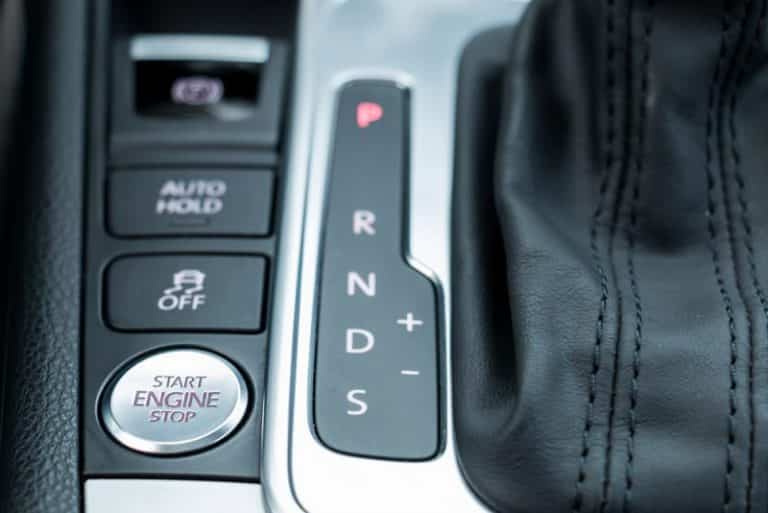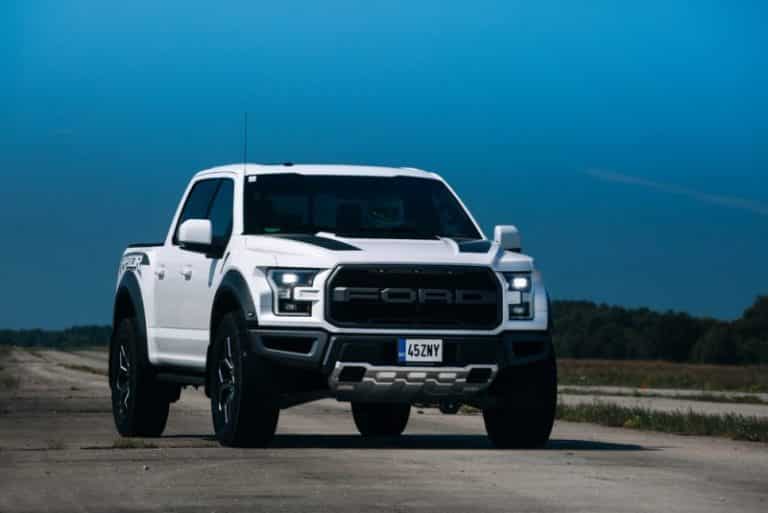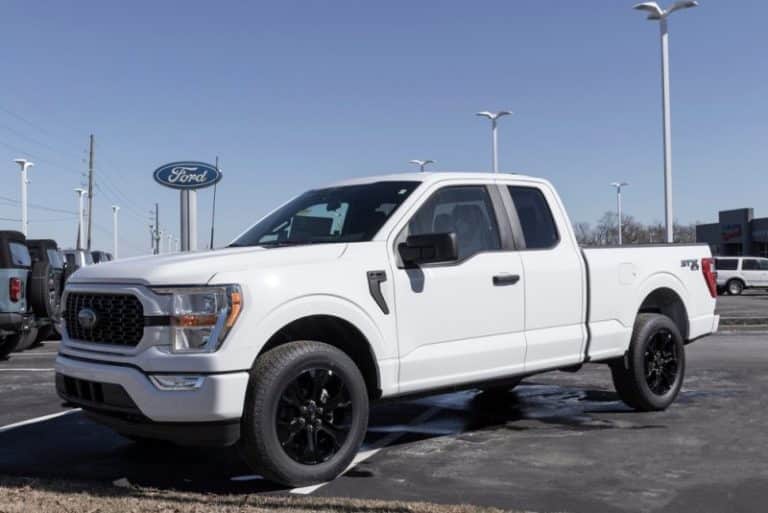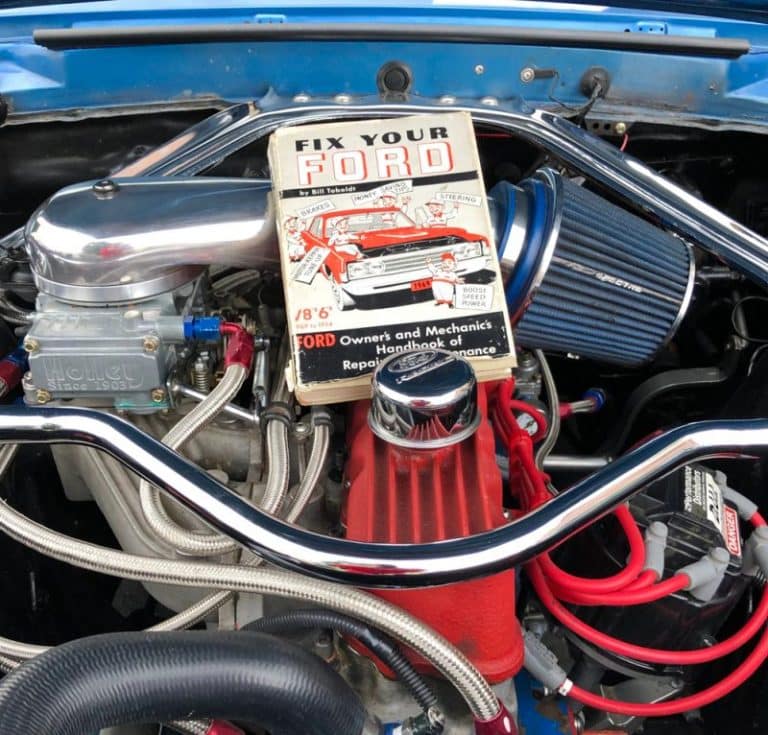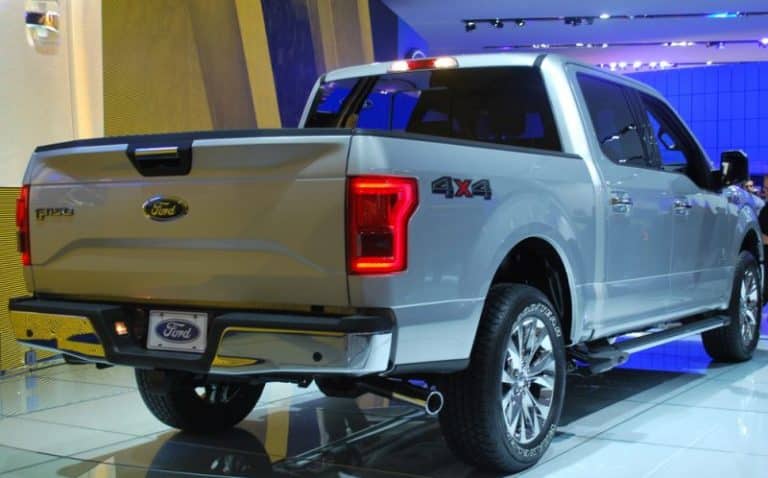Ford F-150 4 Inch Lift Before And After? (Explained)
There are several reasons why truck owners consider lifting their vehicles. For some, it’s to make the front end balance with the rear for a more refined look.
For others, it’s to ride above boulders, stumps, and other typicalities of an off-roading adventure. Finally, some want that badass feel of owning the largest rig on the road.
But is the aftermath always worth the hassle?
You definitely would improve the power and grace of your F150 by lifting the suspension by four inches. However, this comes at the cost of altering the functional operation of the vehicle. I’ll let you in on all you need to know about Ford lift kits and lifting your truck in this article.
How Much Should I Lift My F150?
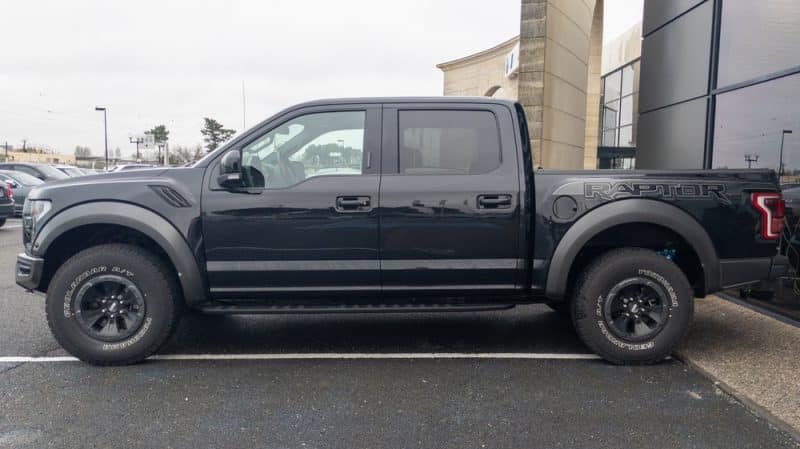
To decide how much you should lift your truck, you need to know what a Ford lift kit does. You should also determine why you want to increase your truck’s height.
This detail will help you select the best way you can achieve it and how high you should lift your truck.
“Lifting” is raising the height of a truck by slightly modifying the vehicle’s structure.
It is done for aesthetic reasons but mostly to enhance the offroad performance of some trucks. Another slightly related term is leveling.
It entails balancing the height of the front end and back of the truck or making the distance from the ground to the rear and front end the same through a front leveling kit. You can get one here.
Leveling is necessary because all pickup trucks typically have their rear ends higher than the front. It compensates for the drop in their trunk when carrying heavy cargo.
Usually, most truck owners prefer that the outlook is balanced and might opt for front-leveling kits to make up for this.
Read more about the difference between Ford Bullet Liner Vs Line-X.
However, leveling raises just the front of the vehicle without changing the rear suspension, unlike lifting, which alters both.
Lifting and leveling both require the use of larger tires. Their design raises the truck’s body away from the axles to increase ground clearance and fit larger tires.
Now let’s look at the advantages and drawbacks of lifting your truck.
#1. Pros
- Easy to manage obstacles. Perhaps, this is the most desirable feature for the offroad driver. In addition, increased ground clearance reduces your truck’s damage due to irregularities on the road.
- Better Visibility: The added four inches give you a better view of the road, obstacles ahead, and other drivers.
- Better towing ability: Lifting is a good idea if you use your truck for towing purposes. When you are towing a heavy load, the height gives the suspension more room to settle.
- The larger tire advantage: With larger tires comes the confidence to go anywhere because the effects of rough trails are less. They also reduce your chances of being stuck in snow, mud, or potholes.
#2. Cons
Below are the downsides of lifting:
- Higher Centre of Gravity, Less stability: It is a well-known rule. Because your truck’s center of gravity has been moved upward, handling might be slightly more difficult.
As a result, you need to drive slower and be very careful when making sharp turns. More importantly, in emergencies, the risk of a rollover or an accident at worse is greater. - Difficult to board: On the practical side entering or alighting your truck would become an exercise as your doors are now farther from the ground. Your kids aren’t going to like enjoy this much, neither would your granny.
- Cost: Lifting is especially quite expensive for most truck owners. Coupled with the fact that you may need to get four new tires, this might burn a hole in your pocket.
- Decreased Fuel economy: The added weight would afford you more power, but you’ll certainly lose some gas mileage.
- Warranty Limitations: Most warranties do not cover trucks alterations such as lifted suspensions. It is livable if your truck is past its warranty but risky if it is still brand new.
- Premature wear and tear: Structural alterations such as lifting affects certain car parts such as the wheel bearings and shocks.
Now that you can see the pros and drawbacks of this, you should decide if you, why, and how to lift it.
For example, if you are looking to slightly elevate the front of the truck to make it balanced with the rear, you should look into getting a front leveling kit.
However, if you are interested in raising the ground clearance as much as 4 inches, you should purchase a suspension lift kit as much as four inches.
How Tall Is a Truck With a 4-Inch Lift?
Now that you understand that the rear of your Ford F150 is higher than the front, what would be your car’s new height?
Take note that the height displayed in the lift kit directly inflects the height of the front end. So the front end is automatically higher by 4 inches.
However, this is different for the back. You should bear in mind two things to know the new height of the back end.
- The Rake effect: as explained before, the rear end of stock trucks is usually higher than the front by 1.5 – 2 inches.
- Lifting involves leveling because both ends are elevated and then leveled to be equal in ground clearance.
Hence, a 4-inch ford lift kit adds 4 inches to the front end but just about 2 inches to the rear end; the other two are covered up by balancing the front and rear end- leveling height.
To get an increased height for your truck, you can achieve lifting in two ways or both. These ways are the Suspension lift or the Body lift.
The latter involves elevating the vehicle’s body away from the tire frames. It gives you the height you need but not ground clearance.
Despite this, body lifts allow room for bigger tires and are more affordable, faster, and easier to perform.
On the other hand, Suspension lifts raise both the body of the vehicle and the frames upward, increasing the clearance.
As a result, the car is suspended higher from the ground by your desired amount of inches through a suspension lift kit.
What Is the Best Lift for a Ford F150?
Choosing the right lift kit for your Ford entails finding the right balance between your vehicle’s needs and what you are trying to achieve because most vehicles have multiple uses.
There are four main factors to consider when choosing a lift kit.
- Vehicle type and factory suspension specifications
- What the vehicle will be used for:
- Desired tire size
- Your budget
Here are some of the best brands for Ford lift kits:
- MotoFab Lifts F150 2.5F-3R Compatible with 2009-2018 models
- YITAMOTOR Leveling Lift Kit for F150, Perfect for models from 2004-to 2018,
- MotoFab Lifts F150 3F-2R
Works with models from 2004-to 2014
- LETENAUTO Ford F-150. For models from 2004-to 2019,
- AKM Lifts F150 Front 2.5″ Leveling Lift Kit For from 2014-to 2019 models
- SCITOO Lifts for F150 2004-2018 models
You can easily purchase some here. How To Tell What Size Rough Country Lift I Have?
Can I Fit 35-inch Tires on a 4 Inch Lift?

Yes, you can. The rule is that the higher the lift, the larger the tires that can be fit. Typically stock trucks can allow only a maximum of 33 inches of tires.
But for lifted trucks, this is just the beginning.
It’s also better to fit in larger tires after lifting your truck to make it more balanced as the center of gravity is now upwards.
Summarily 35×12.5 tires with a rim at least 9 inches wide and an 0 offset of 0 would be perfect for your ford lift kit. How Much Does It Cost To Lift A Jeep Compass?
Final Thoughts
When contemplating lifting your truck or not, you should decide your main reason for wanting to lift the vehicle.
Then select the lift that best suits your vehicle’s specifications and budget.
In conclusion, lifting your truck entails far more than aesthetic enhancement. It, directly and indirectly, affects the vehicle’s handling and should be done for the most practical reasons.
It would take a little getting used to but would ultimately improve the value of your ride.


